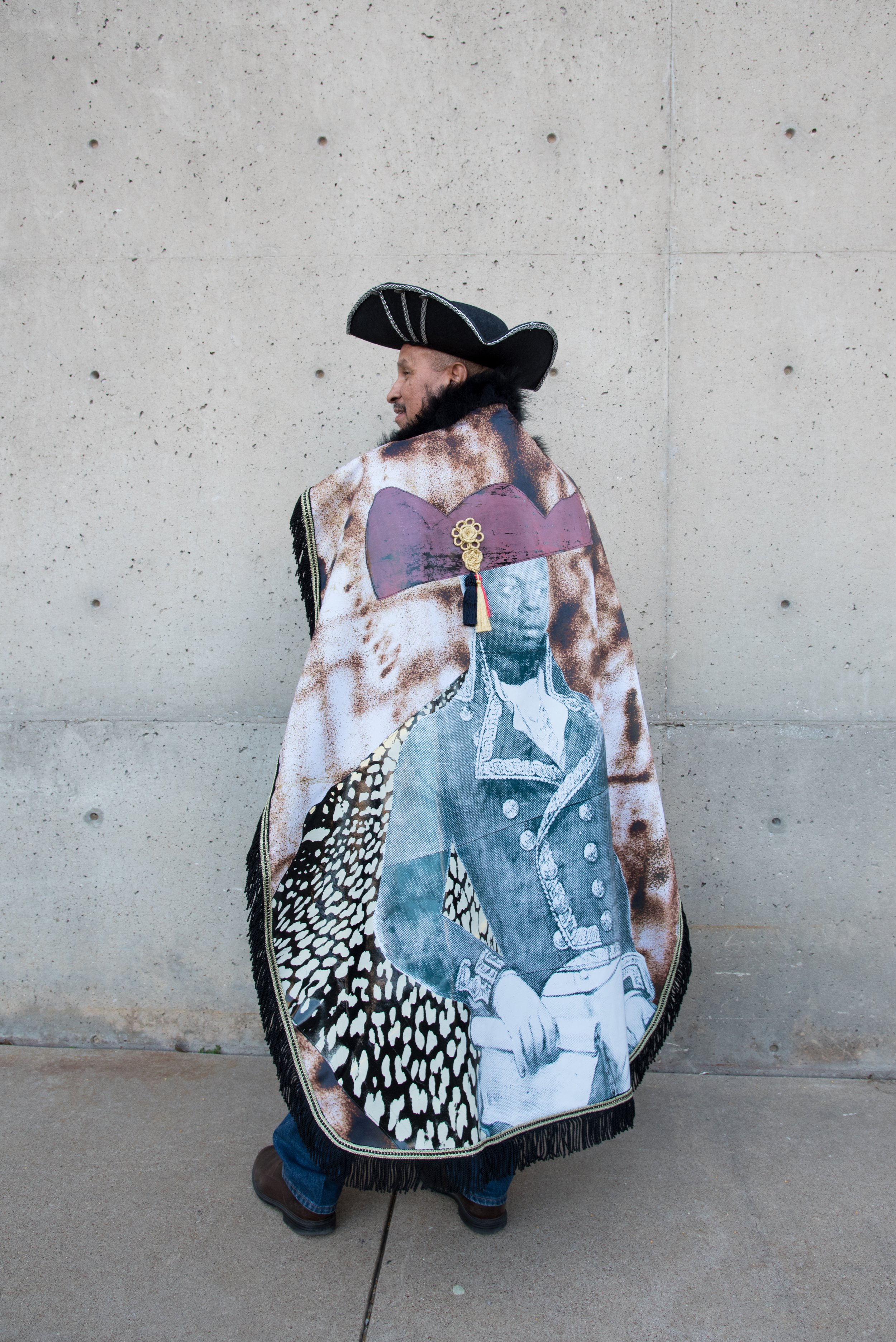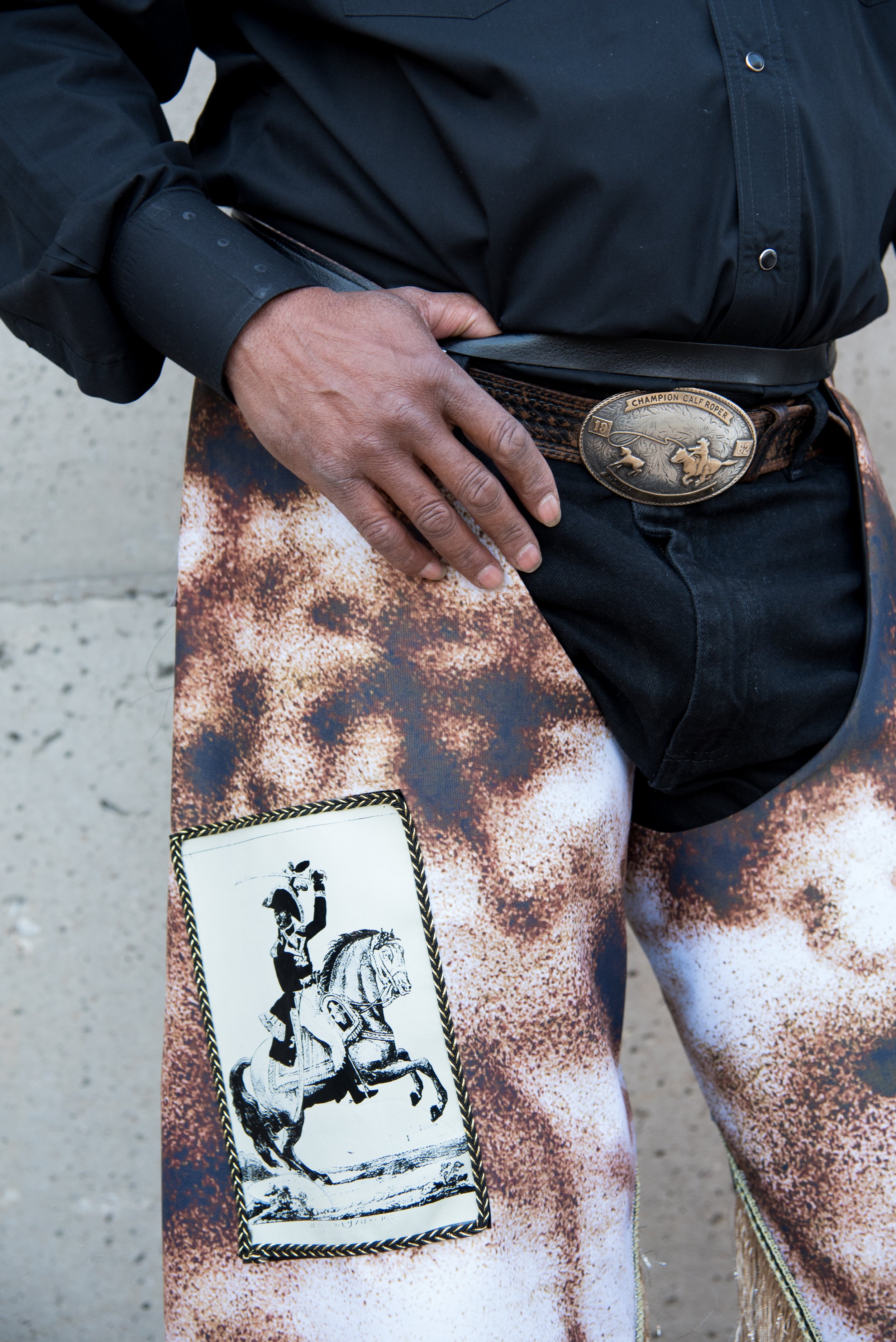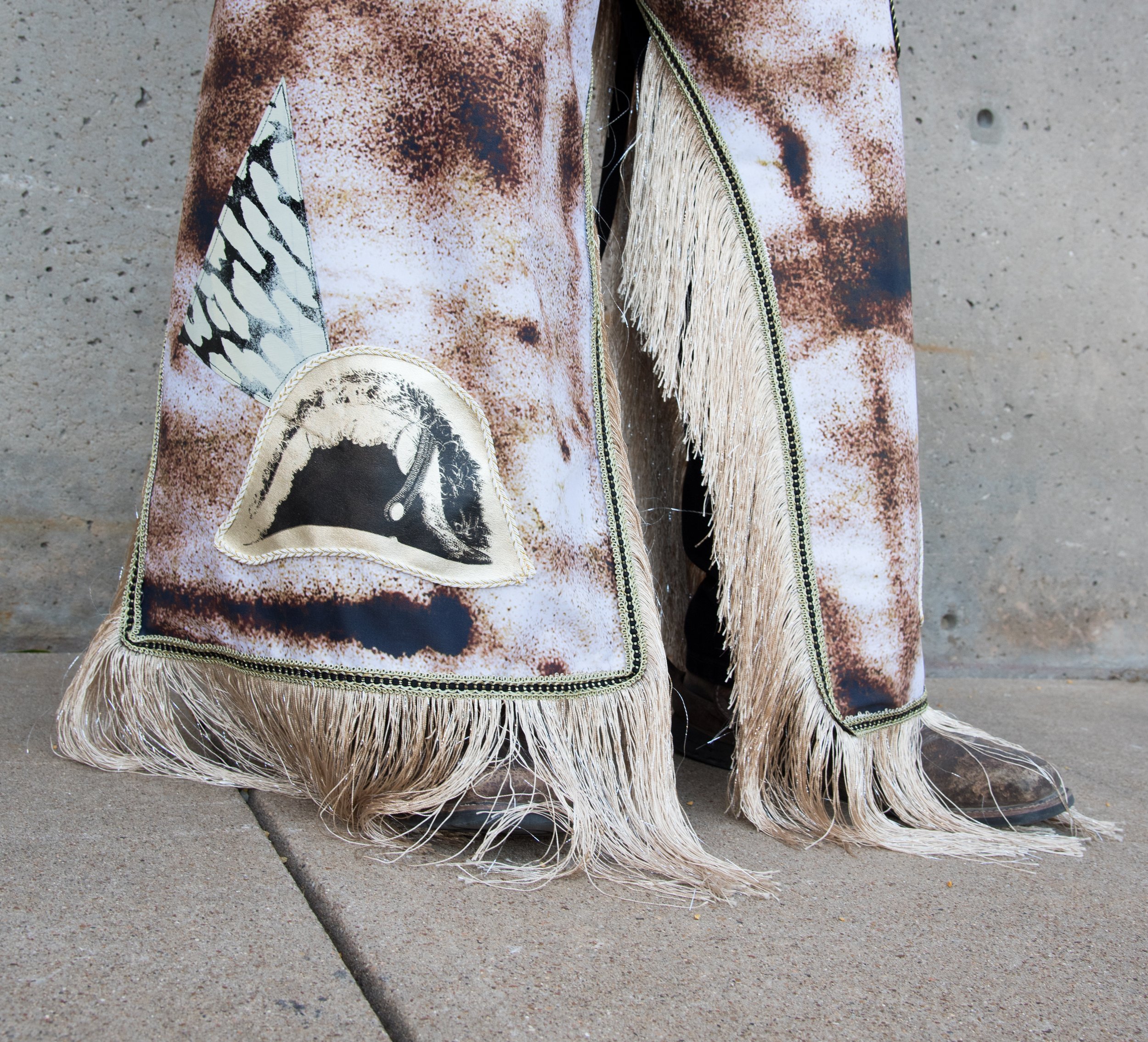Caribbean Fantasia: Raphaël Barontini
February 28 – May 2, 2020
Paris-based artist Raphaël Barontini uses photographic imagery on textiles to create installations that conjure spectacle, celebration and ritual. From large-scale colorful banners and flags to items of customized clothing, his vibrant printed fabric work combines pattern and portraiture that is both eye-catching and alluring. His juxtaposition of seductive surfaces - - playful fringe and tassels against silky drapery and soft leather - - creates a dynamic gallery environment that suggests performance and improvisation.
In using pre-existing imagery Barontini references the collage work of artists like Hannah Höch or Romare Bearden, and his selection of particular photographic portraits points to his ongoing investigation of African Diaspora, of people and populations overlooked or misrepresented. His work engages with and challenges dominant iconographies of colonial interests. He often draws attention to black hero figures in French history, and as such, his contemporary re-presentation of such historic images explores issues of representation and race.
Barontini is particularly influenced by processes of creolization and hybridity and the philosophies of Caribbean thinkers, such as Édouard Glissant and Stuart Hall who believed there is not a homogenous cultural identity for diasporic people. He also considers his own family history which is infused with personal experiences of participating in community parades and carnival, and tracks a path from Réunion Island (French Territory in the Indian Ocean) to the Caribbean and from Italy to Paris.
For the Art Galleries at TCU, Barontini presented an immersive panorama where visitors were surrounded by large-scale fabric works, accompanied by an audio piece commissioned by hip hop musician Mike Ladd. Inspired by Barontini’s research on Haitian General Toussaint Louverture (1743-1803) and other leaders of the Haitian Revolution (1791–1804), the exhibition engages with a precise historical moment - - the Battle of Vertières - - and the fight independence from French colonial rule. Barontini considers equestrian portraiture as a symbol of identity and power, and in the context of Fort Worth, he reflected on the history of the American cowboy, or more specifically, cowboys of color. Understood in this way Caribbean Fantasia represents an imaginary vision of a cavalcade for freedom.
To celebrate the opening of Caribbean Fantasia, Barontini collaborated with the National Multicultural Western Heritage Museum and Hall of Fame in Fort Worth and invited cowboys of color ride to Fort Worth Contemporary Arts from the TCU School of Art. The cowboys wore items of custom clothing created by Barontini, which were later installed in the gallery as part of the exhibition. The parade by cowboys of color was a living tribute to such figures who have been erased from history, but who should be be reconsidered and explored.
Installation & parade images by Lynné Bowman Cravens





























